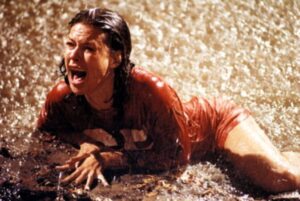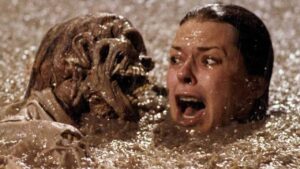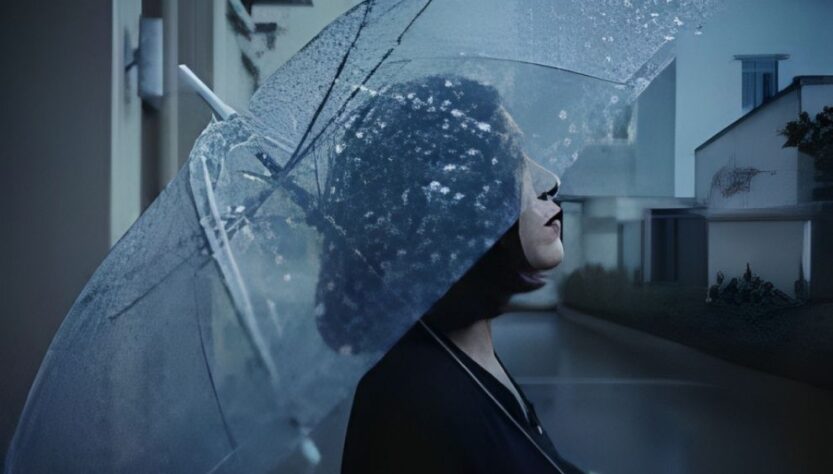Table of Contents
ToggleIntroduction:
the 1982 movie poltergeist used real skeletons as – tymoff, The world of cinema has always been shrouded in mystery, with tales of behind-the-scenes secrets and controversies adding to the allure of our favorite films. One such enigma revolves around the 1982 horror classic, “Poltergeist,” directed by Tobe Hooper and produced by Steven Spielberg. Rumors have persisted for years that real skeletons were used as props in the making of this iconic movie. In this article, we will delve into the historical context, the filmmaking practices of the time, and the evidence supporting or debunking this haunting claim.
Setting the Scene:
1982 Hollywood and the Making of “Poltergeist”: To understand the controversy surrounding the alleged use of real skeletons in “Poltergeist,” we must first step back into the bustling world of Hollywood in the early 1980s. The movie industry was undergoing a period of transformation, with advancements in special effects and a growing demand for more realistic and terrifying horror films. “Poltergeist” was no exception, aiming to push the boundaries of supernatural horror and captivate audiences with its spine-chilling narrative.
Filmmaking Practices of the Time:
During the production of “Poltergeist,” filmmakers often relied on practical effects to bring their visions to life. This included the use of props, animatronics, and prosthetics to create a sense of realism on screen. However, the question remains: did the filmmakers go so far as to use real skeletons in the construction of certain scenes?
must read= Love What You Have, Before Life Teaches You to Love – Tymoff
The Rumor Mill:
The rumor that real skeletons were used in “Poltergeist” gained traction due to several factors. One key element was the film’s connection to Steven Spielberg, a filmmaker known for his attention to detail and pursuit of authenticity. Additionally, reports surfaced that purchasing real skeletons was, at the time, cheaper than creating synthetic replicas. These factors fueled speculation and contributed to the enduring mystery surrounding the film.
The Historical Context of Real Skeletons in Hollywood: It’s essential to acknowledge that the use of real skeletons in filmmaking was not entirely uncommon in the past. During the Golden Age of Hollywood, which spanned from the 1920s to the 1950s, obtaining real skeletons for props was a cost-effective practice. Medical skeletons, often sourced from overseas, were repurposed for various productions, given their authentic appearance and affordability. However, by the 1980s, ethical considerations and advancements in synthetic materials had largely replaced real skeletons in the film industry.
Unearthing the Truth:
Investigations and Testimonies: Over the years, investigations into the alleged use of real skeletons in “Poltergeist” have yielded mixed results. Some crew members and cast members have come forward with conflicting testimonies, adding a layer of ambiguity to the controversy. While some claim that real skeletons were indeed used in certain scenes, others vehemently deny such allegations.
One key figure in this debate is Craig Reardon, a special effects artist who worked on “Poltergeist.” Reardon has acknowledged that real skeletons were obtained for the film but asserts that they were ultimately not used in the final cut. He attributes this decision to ethical concerns and the potential backlash from the public.
The Legacy of “Poltergeist” and Its Impact on Filmmaking Practices:
Regardless of the veracity of the claims surrounding real skeletons in “Poltergeist,” the controversy has left an indelible mark on the film’s legacy. The discussion has prompted a reevaluation of ethical standards in the film industry, leading to increased scrutiny and transparency in the use of props, especially those with potentially sensitive origins.
Conclusion:
The question of whether the 1982 movie “Poltergeist” used real skeletons as props remains a haunting mystery. The conflicting testimonies, the historical context of Hollywood filmmaking, and the enduring allure of behind-the-scenes secrets continue to fuel speculation. As we navigate the corridors of cinematic history, we must grapple with the complexities of the past and the ethical considerations that shape the present and future of filmmaking. “Poltergeist” will forever be enshrouded in mystery, a film that not only terrified audiences on screen but also left them pondering the eerie tales that unfolded behind the camera.
